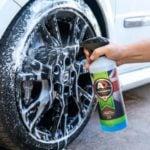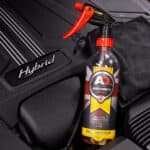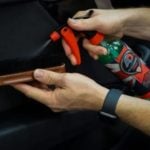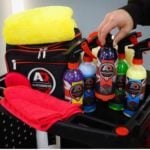Intermediate detailing tuition
Our intermediate-level detailing tuition course focuses primarily on the machine polishing aspect of the detailing process. It is based on the assumption that the client already has a basic knowledge and understanding of the safe wash and decontamination processes.
Key Areas covered in our Intermediate Detailing Tuition Course:
- Different lighting solutions
- Paint types
- Preparing the vehicle for machine polishing (Masking and edge protection)
- Paint assessment and defect identification
- Paint depth readings and what they mean
- Dual-action and Rotary machine polishing theory and practical applications
- Compound and pad selection
- pad cleaning and maintenance
- Choosing the right protection products
- Protection application
- Application of multiple protection layers.
We begin the intermediate detailing tuition course by discussing the preparation steps required to ready the vehicle for machine polishing, why these steps are important, and what can happen if they are not carried out.
Before beginning the polishing process we need to understand a little about the surfaces that we will be working on:
- Is the vehicle an older single-stage paint finish?
- Does the vehicle have a clear coat?
- Is the paint or clear coat hard or soft?
- What type of defects are present?
- How do we identify if the vehicle has received any repaint or repair work?
- How do different vehicle materials respond to the heat generated during machine polishing?
Before physically beginning the machine polishing we also need to measure the depth of the paint on the
vehicle to ensure that there is a sufficient amount of paint/clear coat to safely polish. Once we have confirmed
that it is safe to continue, we will then look at preparing the vehicle for polishing. This will involve masking
areas of the vehicle that we wish to protect from the polishing residue, and sharp areas that may damage
the polishing pads or may be damaged by them such as badges or angular panel edges.
Once the vehicle has been correctly prepared and is ready for machine polishing to begin we will then talk
you through the different types of machine polishers that we will be using, discussing the differences in the
equipment and the techniques required to get the best results from them.









